
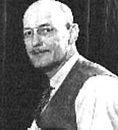


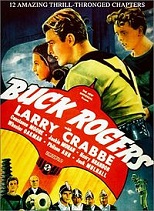
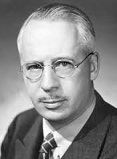
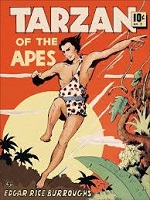
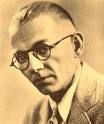



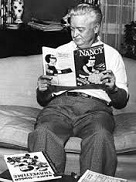
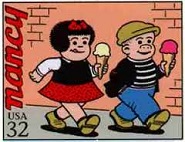
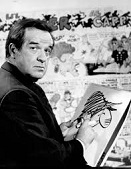
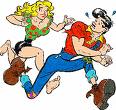

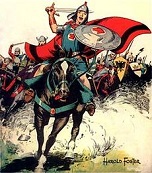
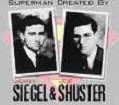


















TLW's Comicscope™ (Comics Historyscope) |
By T.L. Winslow (TLW), the Historyscoper™ |
© Copyright by T.L. Winslow. All Rights Reserved. |
Original Pub. Date: Sept. 26, 2016. Last Update: July 30, 2023. |
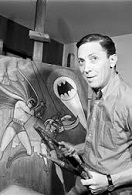
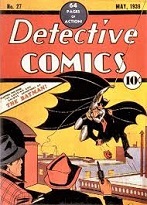
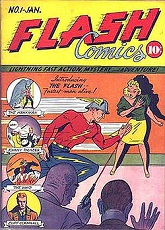
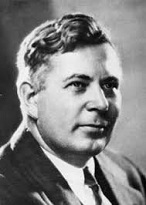
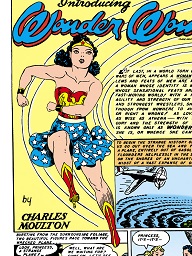
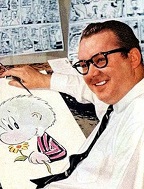
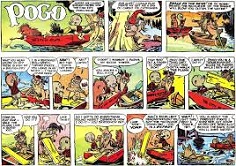
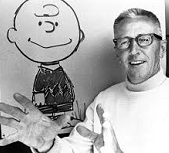


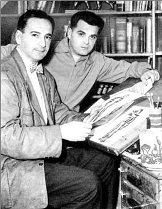
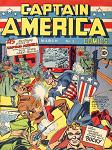

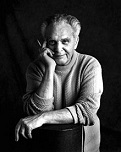
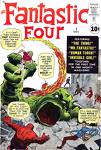

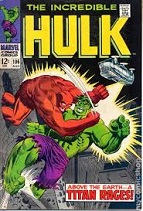
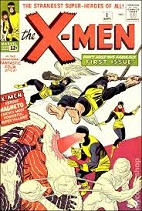



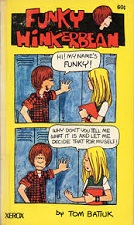
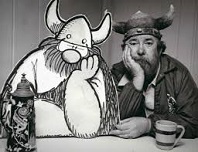
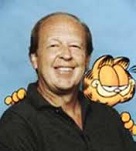
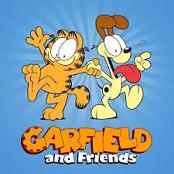


Westerners are not only known as history ignoramuses, but double dumbass history ignoramuses when it comes to comic strip and comic book history. Since I'm the one-and-only Historyscoper (tm), let me quickly bring you up to speed before you dive into my Master Historyscope.
Comics differ from cartoons in that they are usually for pure entertainment sans political content. However, they are so intertwined that we will cover them all.
In 1462 the first cartoons were woodcut illustrations in Biblia Pauperum (Paupers' Bibles) in Bamberg, Germany by printing pioneer Albrecht Pfister (1420-66).

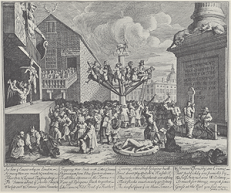
In 1721 London, England-born artist William Hogarth (1697-1764) (pioneer of Western sequential art) begins his carrer with The South Sea Scheme, the first of his black-and-white satires. In 1731 he paints the series of six paintings titled A Harlot's Progress (now lost), a satire of John Bunyan's "Pilgrim's Progress"; M. (Molly) Hackabout arrives in London from the country and becomes a ho in Drury Lane, ending up arrested, worked half to death in Bridewell Prison, and dying fom VD at age 23; turns them into engravings in 1732. In 1732-33 he paints the series A Rake's Progress, (sequel to "A Harlot's Progress"), a satire of English manners and customs; Tom Rakewell, spendthrift son of a rich merchant goes to London, wastes his money in dissolute living, and ends up in Fleet Prison and Bethlem Hospital; turns them into engravings in 1734, which are a hit. In 1743-5 he paints a series of six paintings titled Marriage a la Mode (his magnum opus), showing the disastrous results of a marriage for money; incl. The Marriage Contract.


In 1779 the cartoons of Chelsea, London-born caricaturist ("Father of the Political Cartoon") James Gillray (1757-1815) begin to appear, starting with Paddy on Horseback, and he goes on to ramp it up with caricatures on the French Rev., the stupidity of physiognomy, and English politics in general (esp. George III) until the 1810s.


In 1784 English artist Thomas Rowlandson (1756-1827) draws the first political cartoons, when he isn't cranking out erotica.
In 1837 Rudolphe Toppfer (Töpffer) of Switzerland pub. "The Adventures of Obadiah Oldbuck", becoming the first comic book; in 1842 it becomes the first comic book pub. in the U.S.
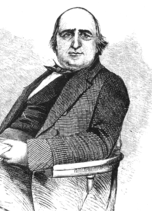
In 1841 the humorous weekly periodical Punch is founded in London by Henry Mayhew (1812-87) and engraver Ebenezer Landells (1808-60), helping to coin the term "cartoon" and reaching its peak influence in the 1840s-1850s; it closes in 1992, and is revived in 1996-2002.



On Dec. 12, 1897 the comic strip The Katzenjammer Kids by German-born cartoonist Rudolph Dirks (1877-1968) and Bryn Mawr, Penn.-born cartoonist Harold Hering Knerr (1862-1949) debuts in the Sun. American Humorist supplement of William Randolph Hearst's New York Journal, becoming the first true comic strip in the U.S., the first to present a story in consecutive panels, and the first to enclose dialogue in balloons; in 1914 after a legal battle, Dirks leaves the Hearst org. and debuts the new comic strip "Hans and Fritz", which he changes to "The Captain and the Kids" during WWI; the phrase "on the Fritz" is coined; a thriving industry of underground porno versions comes along quickly? - good for your complexion?
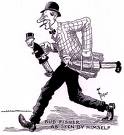
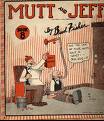
On Nov. 15, 1907 the comic strip A. Mutt, later Mutt and Jeff, created by Harry Conway "Bud" Fisher (1885-1954) debuts in the San Francisco Chronicle (until 1982), becoming the first U.S. newspaper cartoon pub. as a strip of panels (i.e. comic strip); "two mismatched tinhorns", Augustus Mutt (tall), Jeff (short) and his twin bro' Julius; Jeff rises from a mental institution to being nominated for U.S. pres; ends June 26, 1983.

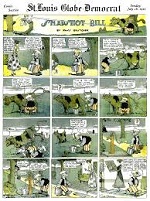
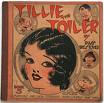
In 1914 Am. cartoonist Russell Channing "Russ" Westover (1886-1966) creates Snapshot Bill, the first nationally syndicated comic stip. In 1921 he creates the comic strip Tillie the Toiler (originally "Rose of the Office"), about a working Flapper girl, which is syndicated by the Hearst newspaper chain and becomes a big hit, carried by 600+ newspapers; in 1927 it is filmed by Hearst's Cosmopolitan Pictures, starring Marion Davies; it runs until 1959.
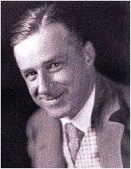
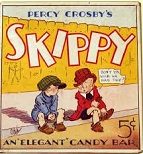
On Mar. 15, 1923 the comic strip Skippy by Brooklyn, N.Y.-born Percy Lee Crosby (1891-1964) debuts in Life mag., going into syndication in 1925 and earning Crosby $2,350/week, inspiring Charles Schulz's "Peanuts" comic strip and made into a 1931 Oscar-winning film; about young Skippy Skinner, who wears a huge collar and tie and floppy checked hat, and gets into mischief; in 1925 Crosby registers Skippy as a trademark, licensing it to toymakers, clothing makers et al.; newspaper syndication ends in 1945.

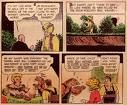
On Aug. 5, 1924 the comic strip Little Orphan Annie by Kankakee, Ill.-born Harold Lincoln Gray (1894-1968) (a Freemason) debuts in the New York Daily News (until June 13, 2010), featuring Annie and her little dog Sandy, becoming the first comic strip to express a political philosophy - she's got red hair, hence must be Mary Magdalene in disguise?

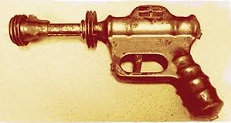



In Aug. 1928 spaceman hero Buck Rogers appears for the first time in the story Armageddon 2419 A.D., by Philly-born Philip Francis Nowlan (1888-1940) in Amazing Stories mag.; Buck falls asleep in 1929 and awakens in the 25th cent.; in 1933 the first Buck Rogers Toys are introduced, launching modern char.-based licensed merchandising, incl. the Buck Rogers line of rocket pistols, manufactured by Daisy; in 1939 the 12-part Buck Rogers serial is released by Universal Pictures, starring Charles Linden "Larry" "Buster" Crabbe II (1908-83). On Jan. 7, 1929 Tarzan first appears in an English comic strip by Harold Foster (1892-1982); the Buck Rogers in the 25th Century comic strip by Philip Francis Nowlan (1888-1940) and Lt. Dick Calkins (1895-1962) debuts the same day.


On Jan. 17, 1929 the Popeye cartoon character by Elzie Crisler Segar (1894-1938) debuts in his "Thimble Theater" King Features comic strip, being hired by Castor Oyl and Olive Oyl's boyfriend Harold Hamgravy to crew a ship to rob a casino; he first appears in a Betty Boop cartoon in 1933; "I am what I am and that's all that I am, I'm Popeye the Sailor Man - toot toot!" - just perfect for the clean set and the dirty set at the same time?


On Apr. 19, 1930 the comic strip Joe Palooka, by Hammond Edward "Ham" Fisher (1900-55) debuts, about a "big, good-natured prize fighter who didn't like to fight, a defender of little guys, a gentle knight", with excitable Irish mgr. Knobby Walsh, becoming the most successful sports comic strip; a blonde with a cowlick, he changes his face to fit each reigning world heavyweight boxing champ until black fighter Joe Louis, deciding to keep him white, esp. since he goes out with white babe Ann Howe, whom he marries on June 24, 1949.


On Sept. 8, 1930 the comic strip Blondie by Murat Bernard "Chic" Young (1901-73) debuts (until ?), reaching a daily readership of 52M; Blondie Bumstead (nee Boopadoop), Dagwood Bumstead, who loves his mile-high Dagwood (Bumstead) sandwich, children Alexander and Cookie, family dog Daisy, Dagwood's boss Mr. Julius Caesar Dithers and his wife Cora, Dagwood's best friend Herb Woodley and his wife Tootsie (Blondie's best friend), Mr. Beasley the Postman, Mike Morelli the Barber, Lou's Diner.


On Oct. 4, 1931 the comic strip Dick Tracy (originally Plainclothes Tracy) by Chester Gould (1900-85) debuts (until 1977); "The nation that controls magnetism will control the universe" - you'll have to come downtown with me?

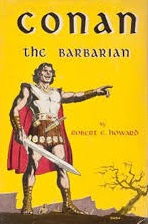
In Dec. 1932 the Cimmerian warrior-king Conan the Barbarian, created by Peaster, Tex.-born Robert Ervin Howard (1906-36) debuts in Weird Tales mag., pioneering the sword and sorcery subgenre; too bad, on June 11, 1936 after hearing that his mother entered a terminal coma, momma's boy Howard shoots himself in the head in his car.


On Jan. 2, 1933 the comic strip Nancy debuts, created by Earnest Paul "Ernie" Bushmiller Jr. (1905-82), about a chubby precocious 8-y.-o. girl with a red bow in her frizzy helmet hair, niece of flapper Fritzi Ritz; in Jan. 1938 her friend Sluggo Smith is introduced, and Fritzi Ritz and her beau Phil Fumble disappear.

In 1933 Superman first appears in the science fiction story "The Reign of the Super-Man" by writer Jerome "Jerry" Siegel (1914-96) and artist Joseph "Joe" Shuster (1914-92), h.s. students in Cleveland, Ohio, who sell the character to Detective Comics (DC Comics) in 1938; the original Superman is a bald telepathic villain bent on dominating the world; Siegel invents the real one in 1934.


In 1933 Am. cartoonist Elmer Simms Campbell (1906-71) begins pub. his "Harem Girls" and other cartoons in Esquire mag., becoming the first African-Am. cartoonist to pub. in nat. distribution slick mags., going on to pub. work in almost every issue unti 1958, plus many other mags. and newspapers; his little joke is that he turns white men on with cartoons of gorgeous white women, even though he's black?
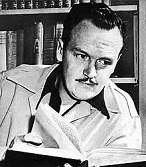
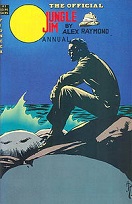
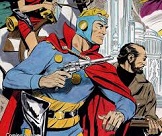
On Jan. 7, 1934 (Sun.) the King Features Syndicate comic strip chars. Jungle Jim (Bradley) and Flash Gordon by Alexander Gillespie "Alex" Raymond (1909-56) debut.


On Aug. 13, 1934 the comic strip Li'l Abner by New Haven, Conn.-born Al Capp (Alfred Gerald Caplin) (1909-79) debuts (until Nov. 13, 1977), about a fictional Southern Am. town, reaching 60M readers in 1K newspapers in 28 countries; chars. incl. 19-y.-o. Li'l Abner Yokum, his mother Mammy Yokum (Pansy Hunks), his father Pappy Yokum (Lucifer Ornamental Yokum), his babe Daisy Mae Scragg, and their son Honest Abe Yokum (b. 1953);


On Sept. 9, 1934 after debuting in The New Yorker on June 7, 1930, the comic strip The Little King by Otto Soglow (1900-75) debuts in syndication in the U.S. with King Features (until 1975).

On Feb. 17, 1936 the comic strip The Phantom, "the Ghost Who talks", by Lee Falk and Ray Moore debuts (until ?), reaching 100M readers in 583 newspapers worldwide (see the year 1536).


On Feb. 13, 1937 (Sat.) the comic strip Prince Valiant in the Days of King Arthur by Canadian-Am. cartoonist Harold Rudolf "Hal" Foster (1892-1982) debuts (until 1971), about exiled 5th cent. C.E. Viking prince Edward, Duke of Windsor in the days of King Arthur, who wields the Singing Sword Flamberge (sister to Arthur's Excalibur), gets a seat at the Round Table, meets his babe Ilene on a Mediterranean island, fights the Huns, travels to Africa and America, and helps his father overthrow tyrant Sligon to regain his lost throne of Thule; it goes on to become known as the "greatest contribution to English literature in the past hundred years", with elaborate realistic artwork, references to historical events, and cool dialog, reaching 300 U.S. newspapers and 4K episodes by 2016; strip #16 is the first full-page strip, which ends with strip #1787 (last drawn by Foster), going to half-page format; on Feb. 13, 1937 it goes color; on May 15, 1938 it changes from Sat. to Sun. with strip #66.
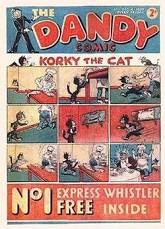
On Dec. 4, 1937 the British comic book The Dandy, starring Desperate Dan, a cowboy from Cactusville who loves cow pie cooked in a dustbin lid, and pub. by DC Thomson & Co. of Dundee, U.K. debuts, eventually reaching 2M circ. a week in the 1950s and becoming the longest-running comic book series (ends Dec. 4, 2012).


On June 1, 1938 the first issue of the Superman comic book series, by Cleveland, Ohio-born writer Jerome "Jerry" Siegel (1914-96) and Toronto, Canada-born artist Joseph "Joe" Shuster (1914-92) appears in Action Comics #1, and sells for 10 cents, launching the Golden Age of Am. Comic Books (ends 1955); they sell their rights to Superman next year for $130; Superman can leap 1/8 of a mi. and hurdle a 20-story bldg. - Bill Gates gets an idea?
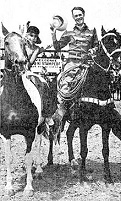
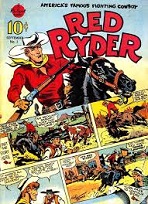
On Nov. 6, 1938 the comic strip Red Ryder (originally Bronc Peeler) by entrepreneur Stephen Slesinger (1901-53) and Fred Harman (1902-82) (AKA Tom Horn) debuts (until Sept. 30, 1965), reaching 40M readers in 750 newspapers, and used to market Daisy BB guns; "From out of the West comes America's famous fighting Cowboy."


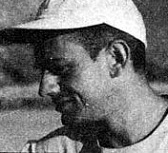
In May 1939 Batman (originally Bat-Man) debuts in Detective Comics #27, created by artist Bob Kane (Robert Kahn) (1915-98) and writer Milton "Bill" Finger (1914-74), becoming so popular that it is given its own comic book title next year.
On Oct. 1, 1939 Marvel Comics #1 debuts, featuring Jim Hammond the Human Torch, Thomas Halloway the Angel, and Namor the Sub-Mariner, becoming the first comic book anti-hero.

In Jan. 1940 the comic book series The Flash debuts, pub. by All-Am. Pubs. (later rename Nat. Periodicals and DC Comics), starting out with Jay Garrick and switching to Barry Allen in 1956.
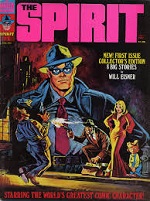

On June 2, 1940 the comic series The Spirit debuts as a 16-page tabloid insert in the Sun. eds. of Register and Tribune Syndicate newspapers, created by William Erwin "Will" Eisner (1917-2005), reaching 5M circ. in this decade befoe being discontinued in 1952.
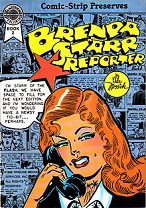

On June 30, 1940 the comic strip Brenda Starr, Reporter by Dalia "Dale" Messick (1906-2005) debuts, making her the first female syndicated comic strip artist in the U.S.; discontinued on Jan. 2, 2011.


In Mar. 1941 the comic book series Captain America by Timely Comics (predecessor of Marvel Comics), created by Joseph Henry "Joe" (Hymie) Simon (1913-2011) and artist Jack Kirby (Jacob Kurtzberg) (1917-94) debuts with a cover showing him hitting Adolf Hitler in the face; his alter ego is Steve Rogers, born on July 4, 1917 in Lower East Side, Manhattan to Irish immigrants, who is a tall scrawny weakling until given the Super-Soldier serum designed by Abraham Erskine AKA Dr. Josef Reinstein; his popularity zooms during WWII then tanks, and he is retired in 1953, then revived in 1964 to become a member of the Avengers.
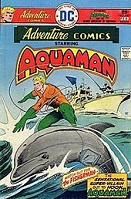
In Nov. 1941 Aquaman debuts in DC's More Fun Comics #73, about the king of Atlantis, who goes on to become a founding member of the Justice League.


On Dec. 22, 1941 Archie Comics debuts, created by publisher John L. Goldwater, written by Vic Bloom and drawn by Bob Montana; in Dec. Wonder Woman debuts in All Star Comics #8, created by polygraph inventor William Moulton "Charles" Marston (1893-1947), about an Amazon warrior princess AKA Princess Diana of Themyscira AKA Diana Prince, who was sculpted from clay by her mother Queen Hipollyta and given life and superhuman powers by the Greek gods.
On June 17, 1942 the 5-cent newspaper Wank, er, Yank, the Army Weekly, founded by U.S. Maj. John Hartzell Spence (1908-2001) debuts (until Dec. 1945), featuring articles written by enlisted soldiers and art by Jack Banham Coggins (1911-2006) is pub. in 21 eds. in 17 countries, with a worldwide circ. of 2.6M., becoming the most widely read U.S. military mag.; the cover of the Aug. 2, 1945 issue shows Norma Jeane Dougherty on the assembly line at the Radioplane munitions factory in Burbank, Calif., opening doors to her acting career as Marilyn Monroe; it also incl. the cartoons G.I. Joe by Irving David "Dave" Breger (1908-70) and The Sad Sack (debuts June 1942), by Sgt. George Baker (1915-75); Sad Sack debuts on CBS radio on June 12, 1946, starring Herb Vigan, followed by a film in 1957 starring Jerry Lewis.
On Feb. 20, 1944 the comic strip Batman and Robin debuts in U.S. newspapers; in spring the comic book vers. (#20) features the first-ever Batmobile cover, along with Catwoman (The Cat) AKA Selina Kyle.

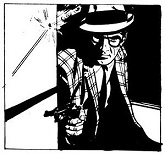
On Mar. 4, 1946 the comic strip Rip Kirby, by "Flash Gordon" artist Alexander Gillespie "Alex" Raymond (1909-56) debuts (until June 26, 1999), about a sophisticated, urbane, pipe-smoking glasses-wearing scientist privte detective, his valet Desmond, and steady girlfriend Honey Dorian, breaking the mold.
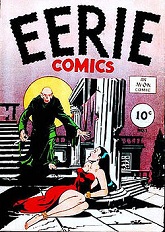
In Jan. 1947 Erie Comics (52 pages, full color, 10 cents) is pub. by Avon Periodicals, created by Joseph "Joe" Kubert (1826-2012) and Fred Kida (1920-2014), becoming the first standalone horror comic book, founding the gentre; it lasts for only one issue.


On Oct. 4, 1948 the comic strip Bumbazine (later Albert the Alligator, then Albert and Pogo, finally Pogo) by Walter Crawford "Walt" Kelly Jr. (1913-73) debuts (ends July 20, 1975); Prof. Howland Owl resides with possum Pogo in the Okefenokee Swamp in Ware County, Ga.; "We have met the enemy and he is us."
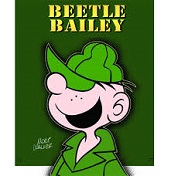
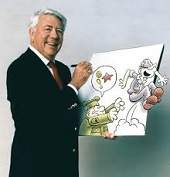
On Sept. 4, 1950 the comic strip Beetle Bailey by Addison Mort Walker (1923-) debuts on King Features Syndicate.


On Oct. 2, 1950 the Peanuts comic strip, by Charles M. Schulz (1922-2000) debuts in seven U.S. newspapers, featuring Charlie Brown, who finally hits a home run on Mar. 30, 1993; original chars. incl. Shermy and Patty, followed by Schroeder (May 1951), Lucy (Mar. 1952), Linus (Sept. 1951), Pig Pen (July 1954), Sally (Aug. 1959), Peppermint Patty (Aug. 1966), Woodstock (introduced Apr. 1967, named June 1970), Franklin (July 1968), and Marcie (July 1971).
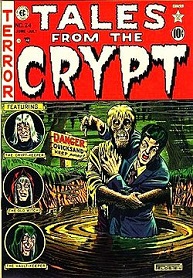
In Oct. 1950 the bimonthly horror comic book anthology series Tales from the Crypt by EC (DC) Comics debuts (until Mar. 1955), becoming a victim of the Comics Code.


On Mar. 12, 1951 the comic strip Dennis the Menace by Henry King "Hank" Ketcham (1920-2001) debuts in 16 U.S. newspapers, followed by another version in England on Mar. 17 by Scottish cartoonist David "Davey" Law (1908-71).


In Dec. 1954 Hannes Hegen (Johannes Hegenbarth) (1925-) of East Germany begins pub. the comic book Mosaik, about the Diegedags, later becoming the only East German comic book to survive the fall of the Berlin Wall.
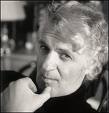
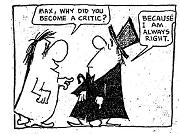
In 1954 Jewish-Am. Antioch College student Herb Gardner (1934-2003) begins pub. the slyly left-wing-slanted comic strip The Nebbishes (ends 1960), which is syndicated by the Chicago Tribute to 60+ major newspapers in 1959, by which time it has become a nat. craze, with wall decorations, greeting cards, cocktail napkins etc. carrying panels; after "the balloons were getting larger and larger and there was hardly any drawing left", he quits to become a playwright.
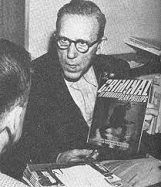
In 1954 German-born Am. pshrink Dr. Frederic Wertham (1895-1981) pub. Seduction of the Innocent, which causes the U.S. Congress to investigate the "menace" of comic books, which are turning youth into juvenile delinquents, perverts, and illiterates, resulting in the Comics Code Authority, formed by the Comics Magazine Assoc. of Am. (founded in May 1947) to forestall govt. regulation by self-policing; next year Mad (founded Oct. 18, 1952) (10 cents) goes from comic book to mag. form (8 times a year) to get around this madness, with its spokesman Alfred E. Neumann asking "What? Me Worry?", and an editorial office on "Mad"-ison Ave in Neu E. York City.
In 1956 the Silver Age of Am. Comic Books begins (ends 1970), featuring superhero comics created by John Broome, Steve Ditko, Gardner Fox, Jack Kirby, Stan Lee et al.

On Oct. 24, 1956 the cartoon strip Feiffer debuts in The Village Voice (ends 1997), by Jules Ralph Feiffer (1929-); on Jan. 1, 1958 the collected strips are pub. as "Sick Sick Sick: A Guide to Non-Confident Living", becoming a bestseller and leading to sequels.
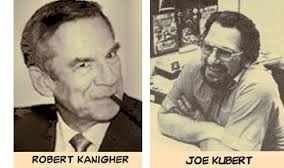
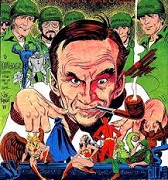
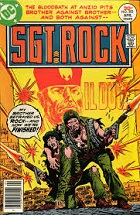
In June 1959 the comic book series Sgt. Rock is debuted by DC Comics, created by artist Joseph "Joe" Kubert (1926-2012) and writer Robert Kanigher (1915-2002), about WWII vet Sgt. Franklin John "Frank" Rock, who becomes an infantry non-commissioned officer.
In Mar. 1960 the Justice League debuts in DC Comics' "The Brave and the Bold" #28, consisting of Superman, Aquaman, Flash, Green Lantern, Martian Manhunter, Batman, and Wonder Woman; in Nov. "Justice League of America" debuts.



In Nov. 1961 the Fantastic Four comic book series debuts, created by writer Stan Lee (Stanley Martin Lieber) (1922-2018) and artist Jack Kirby (Jacob Kurtzberg) (1917-94), about Mister Fantastic (Reed Richards), Invisible Woman (Susan "Sue" Storm), Human Torch (Johnny Storm), and Thing (Ben Grimm), becoming a big hit, putting Marvel Comics on the map and starting a comic book rev.

In May 1962 the comic book series The Incredible Hulk is debuted by Marvel Comics, created by Stan Lee and Jack Kirby, about a Jekyl-Hyde char. of the Hulk and his alter ego, mild-mannered physicist Bruce Banner.



On Aug. 15, 1962 U.S. comic book author Stan Lee (Stanley Martin Lieber) (1922-) and artist Steve Ditko (1927-) introduce Spider-Man in the last issue of Amazing Fantasy #15.
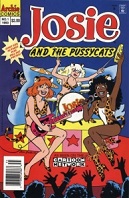
In Feb. 1963 the comic book series Josie and the Pussycats is introduced by Archie Comics (until Oct. 1982), created by Dan DeCarlo, about a fictional rock band; in 1970 Hanna-Barbera Productions debuts it as a Sat. morning cartoon; in 2001 Universal Studios and MGM debut it as a live action film.

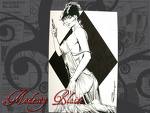
On May 13, 1963 the comic strip Modesty Blaise debuts (until July 7, 2002), created by English writer Peter O'Donnell (1920-) and English artist Jim Holdaway (1927-70), becoming a classic of adventure comics with the sexy heroine proving an exceptional babe of many talents with a criminal past; her platonic trusty sidekick is Willie Garven; starting out as a refugee in Greece in 1945, she is named Modesty by Hungarian scholar Lob, and adds Blaise after Merlin the Magician's tutor, and likes to fight with a kongo (yawara stick); John Travolta reads a Modesty Blaise novel on the toilet in the 1994 film "Pulp Fiction".

On Sept. 10, 1963 the comic book series The X-Men is debuted by Marvel Comics, created by Stan Lee and Jack Kirby, about mutants with superhuman abilities, led by Professor X (Charles Xavier) of the School for Gifted Youngsters in X-Mansion, Westchester County, N.Y., incl. Archangel (Angel), Beast, Cyclops, Iceman, Marvel Girl (Jean Grey), and Wolverine.
In 1964 the Teen Titans debut in DC Comics' "The Brave and the Bold" #54, incl. Kid Flash, Robin, and Aqualad, later Wonder Girl.
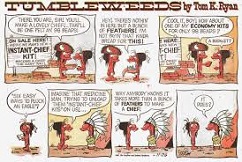
In Sept. 1965 the wacky Old West comic strip Tumbleweeds by Tom K. "T.K." Ryan (1926-) debuts in the Register and Tribune Syndicate, later acquired by the King Features Syndicate; set in Grimy Bulch (pop. 49), the nearby village of the Poohawk tribe, and U.S. Army Ft. Ridiculous, manned by the 6/7/8 Cavalry, it chronicles the life of lazy cowboy Tumbleweeds, who is always running from Hildegard Hamhocker, his first horse Blossom, second horse Epic, best pal (prof. gambler) Ace, yo-yo-carrying Deputy Knuckles, handlebar-mustachioed Sheriff, for-sale Judge Horatio Curmudgeon Frump, Tex. lawman Quiet Burp, Hildegard's adopted niece Echo and her lazy dog Pajamas, undertaker Claude Clay and gravedigger Wart Wimble; "Garfield" creator is Ryan's asst. in 1969-78; the series ends on Dec. 30, 2007.


On Oct. 26, 1970 Doonesbury, by New York City-born cartoonist Garretson Beekman "Garry" Trudeau (1948-), about Michael J. Doonesbury (who comments on U.S. military involvement in Vietnam) begins pub. (until ?), starting in the Yale Daily News under the title "Bull Tales", then spreading to 25 newspapers through the new Universal Press Syndicate (UPS), founded by John McMeel and Jim Andrews, ultimately reaching over 300, and later becoming the first comic strip to win the Pulitzer Prize (1975).


On Mar. 27, 1972 the comic strip Funky Winkerbean is debuted by King Features Syndicate, created by Thomas Martin "Tom" Batiuk (1947-), about students at Westview H.S. incl. Funky Winkerbean, Barry Balderman, star athlete Bull Bushka, band dir. Harry L. Dinkle, winless football coach John "Jack" Stropp, Crazy Harry Klinghorn (who lives in his locker), Lisa Crawford, Junebug, Leslie P. "Les" Moore, majorette Holly Budd et al.; early episodes feature a sentient school computer that's obsessed with Star Trek.

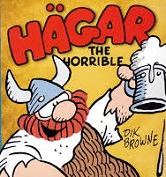
On Feb. 4, 1973 the comic strip Hagar (Hägar) the Horrible is debuted by King Features Syndicate, created by Richard Arthur Allan "Dik" Browne (1917-89), who retires in 1988, allowing his son Chris Browne (1952-) to take over, growing to 1.9K newspapers in 58 countries and 13 languages by 2010.
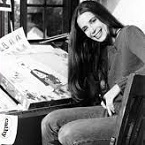
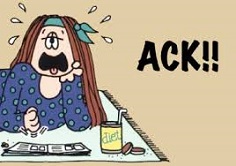
On Nov. 22, 1976 the women's comic strip Cathy debuts (until Oct. 3, 2010), by Dayton, Ohio-born Cathy Lee Guisewite (1950-), about Cathy, who struggles through the "four basic guilt groups" of life, incl. food, love, family, and work, reaching 1.4K newspapers.
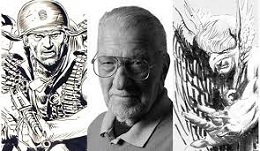
In 1976 the Joe Kubert School of Cartoon and Graphic Art is founded in Dover, N.J. by Polish-born comic book artist ("Sgt. Rock", "Hawkman", "Tor", "Tales of the Green Beret") Joseph "Joe" Kubert (1926-2012); alumni incl. Amanda Conner ("Power Girl"), Lee Weeks (1960-) ("Daredevil", "The Batman Chronicles"), and Alex Maleev (1971) ("Daredevil").
On Feb. 18, 1977 the comic book 2000 A.D. (dated Feb. 26) begins pub. (until ?), becoming known for its Judge Dredd stories.
In 1977 the Billy Ireland Cartoon Library & Museum is founded in Columbus, Ohio, becoming the world's largest academic research facility devoted to comic strips and cartoons.


On June 19, 1978 the comic strip Garfield debuts, created by Ind.-born James Robert "Jim" Davis (1945-) (named after his opninionated grandfather), about America's favorite lasagna-loving cartoon cat Garfield, his owner Jon, and Jon's dog Odie in Muncie, Ind.; by 2013 it is syndicated in 2,580 newpspapers, setting a Guinness World Record.
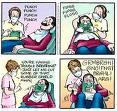

On Sept. 9, 1979 the B&W comic strip For Better or For Worse by Canadian cartoonist Lynn Franks Johnston (nee Ridgway) (1947-) debuts (until Aug. 31, 2008).


On Apr. 16, 1989 Crocker Nat. Bank employee Scott Raymond Adams (1957-) of San Francisco, Calif. begins pub. the Dilbert comic strip, about a nerdy white engineer, his pet dog Dogbert, the Pointy-Haired Boss, Alice, and Wally.
On May 31, 2012 Am. conservative Christian lobby group One Million Moms launches a campaign against DC and Marvel Comics over their decision to include openly gay chars.